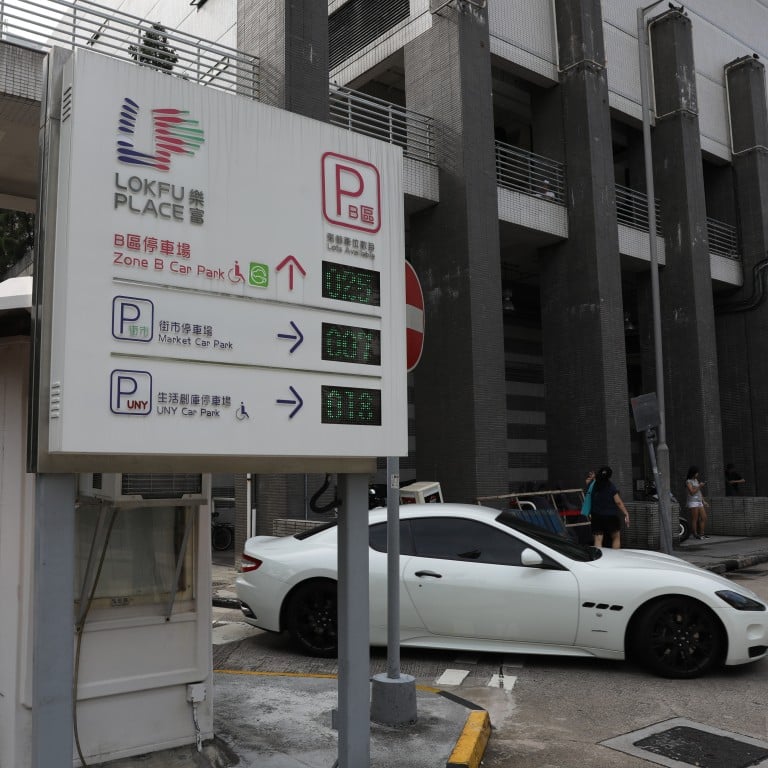
Link Reit looks to the mainland as Hong Kong rent growth cools
- The Link Reit said property income rose 0.3 per cent to HK$7.69 billion (US$981.44 million) for the financial year ended March 31
- The company declared a 9.6 per cent increase in final distribution per unit to HK$1.4055, raising the total distribution per unit to HK$2.7117
The Link Real Estate Investment Trust (Link Reit), Asia’s largest real estate investment trust, announced on Monday modest growth in property income for 2018 and said it plans to acquire more commercial properties in China’s top tier cities, adding to its holdings in Beijing, Shanghai, Shenzhen and Guangzhou.
“There is no lack of projects [in first-tier cities] under discussion. But the firm remains very prudent and selective, looking only at properties that can add value to our asset portfolio and generate immediate income,” said Gary Fok, chief asset management officer of the Link Reit.
“First-tier cities are big enough. For the time being they remain our absolute priority for their robust local economies, huge commercial property stock, transparent market, and a ready talent pool to manage properties.”
The Link Reit said property income rose 0.3 per cent to HK$7.69 billion (US$981.44 million) for the financial year ended March 31. Revenue edged up 0.1 per cent to HK$10.04 billion.
The company declared a 9.6 per cent increase in final distribution per unit to HK$1.4055, raising the total distribution per unit to HK$2.7117.
The Link Reit owns 126 properties, including shopping centres and car parks, in Hong Kong and five in the mainland.
The Link Reit’s Hong Kong shares rose 2.2 per cent to close at HK$95.85 on Monday, following the midday results’ release.
George Hongchoy, chief executive of the Link Reit, said at a media briefing after the lunch break, that he was not too worried about the impact of the US-China trade war on the economic outlook for the mainland.
“Regarding the impact of the trade war on the economy, one of the strategies [of China] is to boost domestic consumption,” he said. “We hope this can benefit the sales of [retail] tenants of our shopping centres.”
He said the Link Reit had been satisfied with the performance of mainland properties it had bought in recent years.

Annual rent increases at mainland office and shopping malls outpaced those in Hong Kong by several percentage points, he said.
“In the past year, after leases expired, the rent increases of lease renewals of about 30 per cent were higher than the average in Hong Kong,” he said. “Even for Shanghai’s office properties, which face relatively keen competition, it also achieved a rent increase of 23.8 per cent.”
The Link Reit raised its mainland asset exposure ceiling to 20 per cent last November from 12.5 per cent.
In February, the Link Reit paid 6.6 billion yuan (US$855.42 million) for the Central Walk mall
in Shenzhen. The Link Reit’s exposure to the mainland represents 13.1 per cent of total assets.
Fok said he would consider investing in second-tier cities, particularly those with property assets near convenient transport links to first-tier cities. He named smaller cities such as Foshan and Suzhou as likely candidates for investment because of their respective proximity to Guangzhou and Shanghai.
Unlike private equity funds, which pursue relatively higher returns in the short-term, the Link Reit adopts a “core” and “core-plus” strategy that seeks to add value to prime properties by upgrading them over time, he said.
Hongchoy said some commercial properties on the mainland were being released for sale amid tightening liquidity conditions.
“We have recently met more [mainland potential sellers] about projects because they had difficulty refinancing,” he said.
He said the Link Reit would base future acquisitions on criteria that include good transport connectivity, long-term growth potential and whether the asset has a sizeable population catchment.


